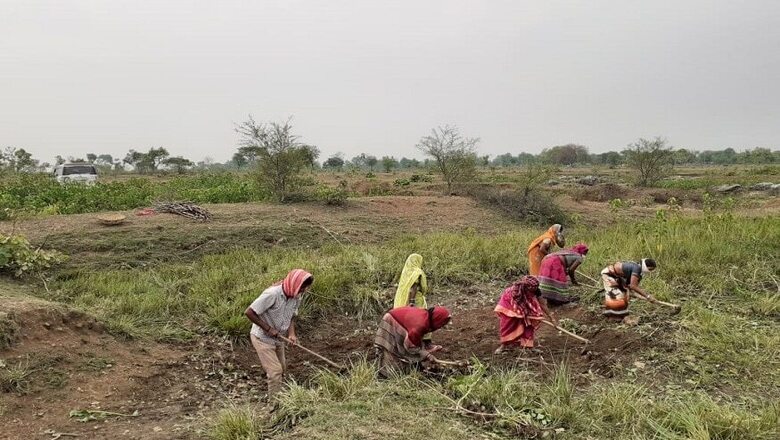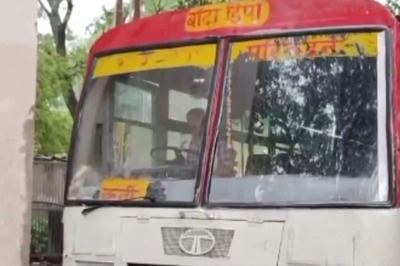
views
Bilaspur: Once denounced as a ‘tomb of failures’ by the BJP government at the Centre, MGNREGA is proving to be a lifeline for the labour force which has been hard-hit by the coronavirus crisis. With 1.89 crore days of work created under the scheme, Chhattisgarh has taken the lead in providing employment to the migrant labours returning home.
However, the complicated procedure of wage payment under the scheme is a loophole which needs to be corrected at the earliest to provide immediate succour to the destitute. Chhattisgarh is implementing the amended National Rural Employment Guarantee Scheme that provides up to 150 days employment in 11,612 gram panchayats in the state.
According to official figures, as on May 9, 10,121 gram panchayats out of total 11,612 are carrying out close to 43,000 work activities sanctioned under the job guarantee scheme.
Landless labour and marginal farmers constitute 60 per cent of the state’s 2.8 crore population. MGNREGA is a lifeline for this section, especially now, during the sowing or harvest season, where only one-third of the total land under cultivation is irrigated. This year alone, 24 lakh active labourers or 40% families benefitted from MGNREGA in the state.
While the state government has taken up MGNREGA on a priority basis, the system of wage payment needs to be amended so that money reaches the bank accounts of the beneficiaries at the earliest. For the year 2020-21, the central government has sanctioned Rs 934.7 crore to the state, out of which Rs 504 crore has been released. The state government claims to have spent Rs 476 crore, which means that the money has been transferred to the respective panchayat institutions.
The process of payment mandates an on-the-spot inspection by an engineer, who will conduct an assessment of the work to be executed. This is followed by a weekly updation of records by the Employment Assistant (Rojgar Sahayak) at two levels – block and district level. After this has been verified, the payment of wages is done. The entire process can take anywhere between 21 to 30 days workers.
Workers digging a pond at Karankapa village near Bilaspur told the author that at least half of the wages should be paid the same day or within two-three days of the execution of work. Santosh Das, also a resident of the village says he is yet to receive any payment despite having worked for three weeks now.
Shiv Tarai village in Bilaspur's Kota block, is a tribal-dominated area. Kuljeet Meshram, who has worked under the scheme, is awaiting his payment. Chandrakanti of Karankapa village complains that she has not been provided with a job card yet and is being asked to work even as she waits for one.
In some instances, the delay in payments is attributed to work overload on one sub-engineer who is regularly on the move to evaluate and approve the work being done in 10-15 panchayats under his jurisdiction.
The state government requires to set up a monitoring mechanism to ensure the timely payment or at least partial payment of wages in this time of distress.




















Comments
0 comment